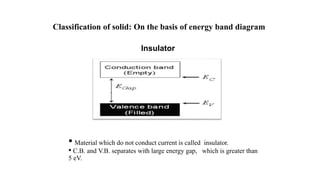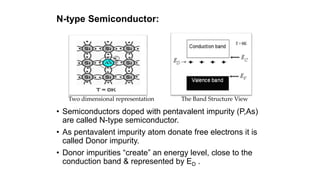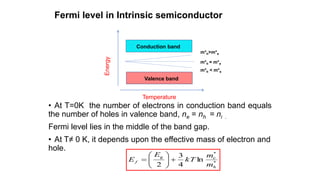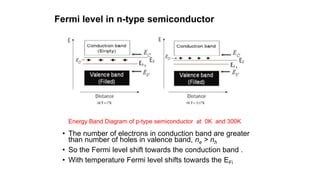This document discusses the classification and properties of solids based on their energy band structure. It describes insulators as having a large energy gap between conduction and valence bands (>5eV), while conductors have an overlapping or zero band gap. Semiconductors have a smaller band gap (~1eV) between the bands. Intrinsic semiconductors are pure, while extrinsic ones are doped with impurities. N-type adds donors, shifting the Fermi level towards the conduction band. P-type adds acceptors, shifting the Fermi level towards the valence band. The document also discusses p-n junction diodes, transistors, the Hall effect, and applications of semiconductors.



































